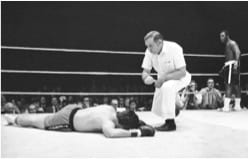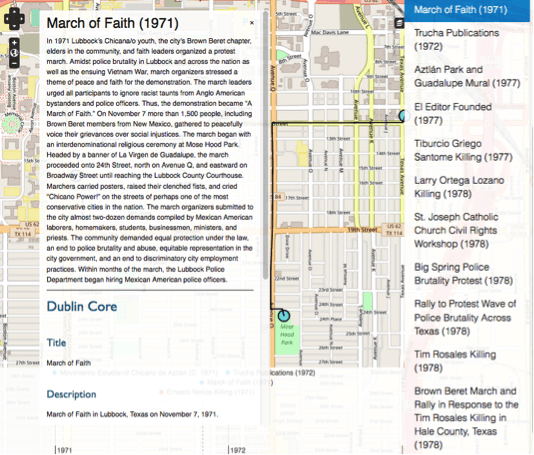
At the end of 2017, a sense of elation was shared by many women in the African American community. There were hashtags such as #blackprincess, #blackroyalty and #princessmeghan floating all over social media to celebrate the royal engagement of England’s Prince Harry to American actress, Meghan Markle.
Although there may have been previous members of the royal family with African ancestry[1] and although Markle’s official title may be “Duchess” instead of “Princess”—as in the case with her future sister-in-law, Duchess Catherine Middleton—many in the African American community will continue to see Markle as the “first black princess.”
Meghan Markle’s bi-racial identity is often referred to when discussing she and Harry’s courtship and subsequent engagement. In fact, when the couple’s relationship first became public in November 2016, the British Daily Mail infamously published a headline stating, “Harry’s Girl is (almost) Straight Outta Compton.”[2] This and other derogatory remarks from the English press prompted Prince Harry to make a speech in defense of Markle and to publicly affirm his commitment to her.[3]
Ongoing Discussions of Markle’s Racial Identity

Criticism of Meghan Markle’s ethnicity came from across the Atlantic Ocean, as well. Ironically, the source of the criticism was from a black woman. Elaine Musiwa, “a Zimbabwean writer based out of New York City”[4] complained shortly after the royal engagement about African American women referring to Markle as “black” since she is biracial. Musiwa began her article by recounting how hard it was for her to celebrate Meghan Markle as a “black” woman because of her biracial identity. The following are her words posted to Vogue magazine’s November 28th online edition:
“Meghan Markle is half black. She is biracial, Her father is white, and her mother is black. I wrote it out and then hit send. This was my response to nearly all of the texts from friends about Prince Harry’s new black finance. With some black friends who I knew needed this celebration of a black woman’s beauty being internationally recognized, I feigned joy: So cool! A dead giveaway of a lie—I rarely ever use the word cool to describe a cultural event other than modern art shows, and those will only be reduced to cool if they are hard to recognize as art…”[5]
Musiwa spent most of her article arguing that the challenges of being biracial are different than those of being “black.” She argues that “Meghan Markle is the type of black that the majority of right-leaning white America wished we all could be, if there were to be blackness at all.”[6] In other words, Musiwa believes that main stream America’s history of preferring the appearance of some biracial blacks to the aesthetic of blacks with more Sub-Saharan African features (dark skin, broad nose, coarse hair) makes biracial blacks not black.
Since the other Vogue writers who have written about the royal engagement have been extraordinarily positive, it is clear that Musiwa’s views don’t reflect the general opinion of Vogue magazine. However, one ponders why Musiwa was allowed to post such an historically incorrect and professionally distasteful essay about Markle. Most people with a very rudimentary understanding of American history know that very few “black Americans” have only black/African ethnicity in their racial makeup. Additionally, Musiwa is ignoring the historical fact that since the time of slavery, blacks who have had any known percentage of black ethnicity within them were—and are—considered black. Even with the well-documented jealousies among African Americans regarding skin tone, there has been a coalescence within the African American community of shared identity and shared suffering– no matter the darkness or fairness of skin tone or the percentage of African or “other” blood. One wonders if Musiwa had similar troubles celebrating Barak Obama as the first black president, since he has a white mother and black father.
The Transition from the Outside to the Inside: Markle’s Character

The reason women in the African American community are celebrating Markle is because her inclusion in the royal family represents a historical turning point in Western history. Very rarely is a woman of African descent considered the ideal representation of beauty, nobility, or virtue in Western standards of positive aestheticism. Most depictions of femininity in its most ideal form are still very Euro-centric in the Western World. Women in the Western world who aren’t of pure European descent are often seen as beautiful and alluring in a type of sexualized or eroticized way. They are exotic creatures to be gazed at, studied, and even conquered for sexual experimentation or exploitation. But very rarely is a black woman viewed as a woman with the whole package: beauty, brains, character, and ability. By choosing Markle, Prince Harry is showing the whole world that an abundance of good qualities can come in unconventional packages.
The Rare Quality of Servanthood
Vanity Fair magazine placed Meghan Markle on the cover of its October 2017 issue. Instead of focusing on Markle’s race, they discussed her character. In the feature article of that month, journalist Sam Kashner, mentioned that “one of the strongest bonds Prince Harry and Markle share is their philanthropy.”[7] As a strong advocate for veterans’ rights, Prince Harry began his Invictus games in 2014 for “wounded, injured, and sick soldiers,”[8] and he has recently become an advocate for mental health. Markle has been an advocate for the U.N.[9] and has brought awareness about issues such as poor water quality[10] and the need for increased education of women’s health in developing countries. Arguably, this shared commitment to concern of others’ welfare is what has solidified their compatibility, and this will be what makes both of them a credit to their country and to the rest of the world.

The ability to look beyond one’s own circumstances—whether those circumstances be pleasant or painful—is a rare quality for any person of any race. This quality is so rare that history commemorates the few who have it. A Mother Theresa, a Princess Diana, a Martin Luther King, Jr. come once in a lifetime, and their service and sacrifice to mankind is not ultimately remembered because of their ethnicity or nationality. They are remembered because they elevate humanity and pierce the darkness of this world with light. Those who have a problem with Markel’s racial identity—with either the black or the white part of it— do well to remember this.
As a woman who devoted her life to service before she had ever met Prince Harry, Meghan Markle challenged herself to look beyond the comforts and the success of her acting career to become someone that very few people really want to be: a servant. In choosing servanthood, she met someone who was like-minded. This person was a prince who elevated her personal and professional status to that of royalty.
To be sure, Meghan Markle’s ethnicity should be celebrated. She will always be an example to the world of the excellence that often emanates from women of color. Most importantly, she exemplifies that entrée onto the great stages of life does not always come from narcissism, calculation and/or self-promotion. (Remember: this is the area of “the selfie.”) Sometimes, the entrance onto the great stages of life comes the old-fashioned way. Martin Luther King, Jr. once explained the old-fashioned way when he quoted this principle from an ancient text “ He who would be great, must first be a servant.”[11]
A Servant. This is what the world should see when evaluating “Princess” Meghan Markle.
[1] Tatiana Walk-Morris, “Five Things to Know about Queen Charlotte,” November 30, 2017. https://www.smithsonianmag.com/smartnews-arts-culture/5-things-you-didnt-know-about-queen-charlotte-180967373/.
[2] http://www.dailymail.co.uk/news/article-3896180/Prince-Harry-s-girlfriend-actress-Meghan-Markles.html.
[3] Zach Johnson, “Prince Harry Defends Girlfriend Meghan Markle From Sexism and Racism” on Social Media.” November 8, 2016. http://www.eonline.com/news/807834/prince-harry-defends-girlfriend-meghan-markle-from-sexism-and-racism-on-social-media.
[4] https://www.vogue.com/contributor/elaine-musiwa.
[5] Elaine Musiwa, “The Problem With Calling Meghan Markle the “First Black Princess.” November 28, 2017. https://www.vogue.com/article/meghan-markle-biracial-identity-politics-personal-essay.
[6] Ibid.
[7] Sam Kashner, “Meghan Markle, Wild About Harry,” https://www.vanityfair.com/style/2017/09/meghan-markle-cover-story.
[8] Invictusgamesfoundation.org
[9] Amy Mackeldon, “6 Times Meghan Markle Used Her Celeb Status for Advocacy and Charity.” December 5, 2017. http://www.harpersbazaar.com/celebrity/latest/a13945782/meghan-markle-charity-work-philanthropy/.
[10] Worldvision Press Release: “Event hosted by Suits star Meghan Markle brings clean water to children.” https://www.worldvision.ca/about-us/media-centre/meghan-markle-brings-clean-water-to-children.
[11] Martin Luther King, “The Drum Major Instinct,” February 4, 1968.




 Although Kaepernick has been ostracized from the NFL, his form of protest has been subsequently imitated by many of his former teammates and by other players throughout the NFL. There are those, particularly the President of the United States, who find the protest of the players unpatriotic and offensive. This post won’t quote the detractors verbatim because they have been challenging the protest for over a year, which means their rebuffs are well-documented.
Although Kaepernick has been ostracized from the NFL, his form of protest has been subsequently imitated by many of his former teammates and by other players throughout the NFL. There are those, particularly the President of the United States, who find the protest of the players unpatriotic and offensive. This post won’t quote the detractors verbatim because they have been challenging the protest for over a year, which means their rebuffs are well-documented.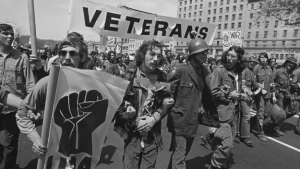



 If borders in general and the U.S.-Mexico border specifically are relatively new historical developments, walls are most certainly not. If anything, they have seemingly existed since time immemorial, with Hadrian’s Wall, the Great Wall of China, and the Berlin Wall all attesting to the long-held belief in separating one area from another. Vestiges of these walls still exist, along with a simple question: did they work? In some ways, the answer is obvious. By their very nature, walls provide a physical barrier between two places, making it difficult for people who wish to cross, legally or otherwise. Moreover, walls, and–as is often the case now–fences, usually have very real and often violent consequences. Take, for example, the Berlin Wall, where between 86 and 262 people died and another 75,000 were arrested, serving prison sentences for up to eight years for “deserting the public.”
If borders in general and the U.S.-Mexico border specifically are relatively new historical developments, walls are most certainly not. If anything, they have seemingly existed since time immemorial, with Hadrian’s Wall, the Great Wall of China, and the Berlin Wall all attesting to the long-held belief in separating one area from another. Vestiges of these walls still exist, along with a simple question: did they work? In some ways, the answer is obvious. By their very nature, walls provide a physical barrier between two places, making it difficult for people who wish to cross, legally or otherwise. Moreover, walls, and–as is often the case now–fences, usually have very real and often violent consequences. Take, for example, the Berlin Wall, where between 86 and 262 people died and another 75,000 were arrested, serving prison sentences for up to eight years for “deserting the public.”
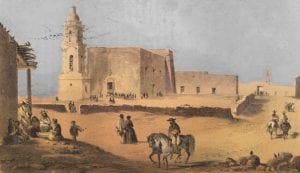 Even before my arrival to Texas, I have always been interested in the history of the Spanish frontiers in North America, particularly the institution of the frontier mission. But studying the missions implied learning about the Franciscan missionaries as well as the missionized. While I encountered a good amount of works that focus on the latter when I started my project, I also found that we knew little on the missionaries, particularly their lives before they reached the frontiers of the Spanish empire. Where did Franciscans come from? What did they learn and how? How were their daily lives? Did they have other evangelical experiences? What type of Catholicism(s) did they practice and taught?
Even before my arrival to Texas, I have always been interested in the history of the Spanish frontiers in North America, particularly the institution of the frontier mission. But studying the missions implied learning about the Franciscan missionaries as well as the missionized. While I encountered a good amount of works that focus on the latter when I started my project, I also found that we knew little on the missionaries, particularly their lives before they reached the frontiers of the Spanish empire. Where did Franciscans come from? What did they learn and how? How were their daily lives? Did they have other evangelical experiences? What type of Catholicism(s) did they practice and taught?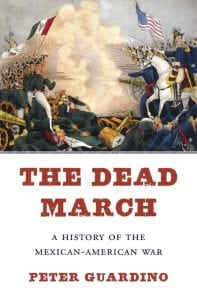 Throughout the book, Guardino builds a sustained and compelling case against a myth that has long haunted interpretations of the Mexican-American War in both countries. This myth suggests that Mexico lost the war primarily because it lacked the stability and national unity of its northern neighbor. Guardino, on the other hand, shows that the war’s outcome had far more to do with the economic and social disparities between the two countries. An assortment of geographical, political, and social forces combined to give the U.S. a strong material advantage. At the same time, costly mobilization efforts, a violent U.S. occupation, and the U.S. Navy’s blockade of Mexican ports compounded Mexico’s already dire economic situation and aggravated its internal conflicts. The loss of revenue from import duties crippled the financially strapped Mexican state, while the war’s demands further burdened a society already living on an economic knife-edge. Given this harsh reality, Guardino shows that the fierce and sustained resistance that Mexicans made against the U.S. invasion was nothing short of remarkable. Working to overcome deep internal divisions and constantly weighing the stark realities of personal and family survival, Mexicans from all walks of life contributed to and participated in the war effort. In doing so, they unequivocally declared and demonstrated their Mexican nationalism. “In short,” Guardino concludes, “Mexico lost the war because it was poor, not because it was not a nation” (367).
Throughout the book, Guardino builds a sustained and compelling case against a myth that has long haunted interpretations of the Mexican-American War in both countries. This myth suggests that Mexico lost the war primarily because it lacked the stability and national unity of its northern neighbor. Guardino, on the other hand, shows that the war’s outcome had far more to do with the economic and social disparities between the two countries. An assortment of geographical, political, and social forces combined to give the U.S. a strong material advantage. At the same time, costly mobilization efforts, a violent U.S. occupation, and the U.S. Navy’s blockade of Mexican ports compounded Mexico’s already dire economic situation and aggravated its internal conflicts. The loss of revenue from import duties crippled the financially strapped Mexican state, while the war’s demands further burdened a society already living on an economic knife-edge. Given this harsh reality, Guardino shows that the fierce and sustained resistance that Mexicans made against the U.S. invasion was nothing short of remarkable. Working to overcome deep internal divisions and constantly weighing the stark realities of personal and family survival, Mexicans from all walks of life contributed to and participated in the war effort. In doing so, they unequivocally declared and demonstrated their Mexican nationalism. “In short,” Guardino concludes, “Mexico lost the war because it was poor, not because it was not a nation” (367).
